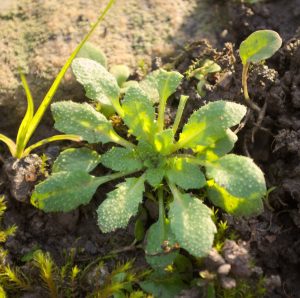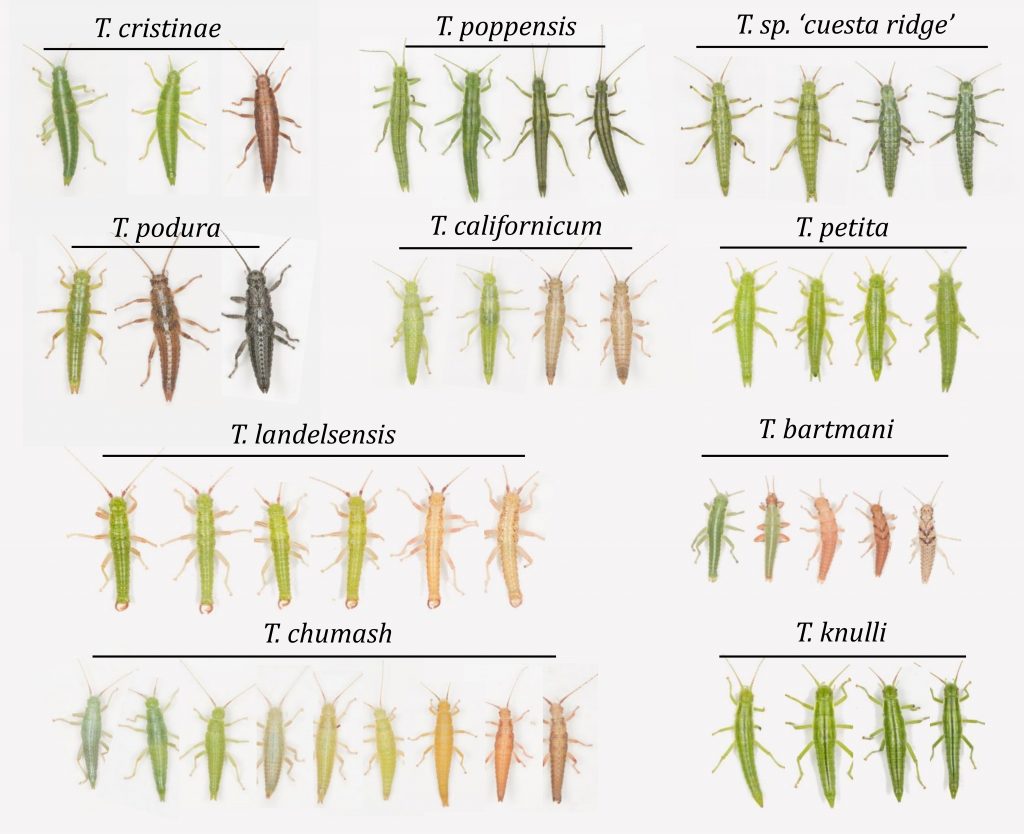Genetics of adaptation
I aim at helping to unravel long lasting questions in biology concerning the origin of genetic ‘novelties’, i.e. does adaptation arise from standing genetic variation or new mutations, how many genes does it involves, does it involves changes in regulation or coding changes, does these genes have particular properties (pleiotropy / position in the genetic network) ?
In order to provide insight on these questions I studied adaptation to soil and climate in natural population of Arabidopsis thaliana, coupled with the temporal monitoring of natural populations of this plant.

I also helped to identify the genetics basis of cuticular hydrocarbons in the stick insect Timema cristinae. These waxy compounds, present on the insect cuticle, are implicated in drought tolerance and in male choice of sexual partner in Timema and therefore have strong implications on speciation in this genus of insect.
Long term maintenance of intra-specific phenotypic variation
The maintenance over long evolutionary time (scale of million of years) of intra-specific phenotypic variation is not expected unless this polymorphism experience balancing selection.
Timema, a genus of wingless insects endemic of California shows tremendous within species variation for colour-pattern (picture attached). Notably, melanistic morphs are observed in 6 of the 11 sexual species of this genus, but green and melanistic morphs are slightly different between species. These observations lead us to the hypothesis that the green/melanistic variation observed within each species derived from an ancestral polymorphism but evolved within each species to better match the ecological conditions of each species (host plants mainly). This genus could therefore be a very good model to study balancing selection over long period of time (~30 Myrs for Timema).

I am currently leading the genetic analysis part (GWAS within each species, Phylogenies …) of this project which involved many people from the Nosil lab. We have very interesting results (that will hopefully be out very soon). Preliminary results indicate that colour genes have been repeatedly locked into inversions to create discrete morphs in most of these species…
Other species of stick insects (from which Timema diverged ~150 Mya) also show variation in colour. I recently got a small grant (Johnston postdoctoral fund) to study colour variation in 11 other species!
Epigenetic inheritance
In recent years more and more focus has be put on the prevalence of epigenetic inheritance in nature. Indeed, more and more examples of trans-generational environmental effects are present in the literature. This phenomenon as been hypothesized to be adaptive under certain conditions, and mediated by different types of mechanisms like histone methylation, small RNA or DNA cytosine methylation (list not complete). The last one has receive much attention in recent years, certainly because a natural mutant of the plant Linaria vulgaris described by Carl von Linné seems to be an epi-mutant involving change in DNA cytosine methylation. This methylation was apparently maintained for 250 years and could change floral symmetry from bilateral to radial in this plant [1].
Timema, a genus of wingless insects endemic of California feed on a broad range of plants (from gymnosperms to angiosperms, sometimes in the same species of Timema) which is quite rare for plant feeding insects. One recent aim of the Nosil lab was to unravel the molecular basis of this phenomenon. What is the ratio of genetic inheritance and epigenetic inheritance in this phenomenon?
I therefore lead the initial efforts to characterise the methylome (genome wide DNA cytosine methylation) of natural populations of Timema cristinae (which is the species we know the most about in the radiation) living on different host plants.
